Key takeaways
- YouTube channel optimization involves creating a cohesive experience, focusing on elements like thumbnails, descriptions, and personal storytelling to engage viewers and grow an audience organically.
- Effective use of SEO, including keyword research and eye-catching titles, enhances discoverability, ensuring music reaches the right audience.
- Promoting a music channel requires active engagement with the community, sharing content on various platforms, and building relationships to amplify reach.
- Regular analysis of channel analytics helps refine content strategy, ensuring adjustments are data-driven to resonate more with viewers.
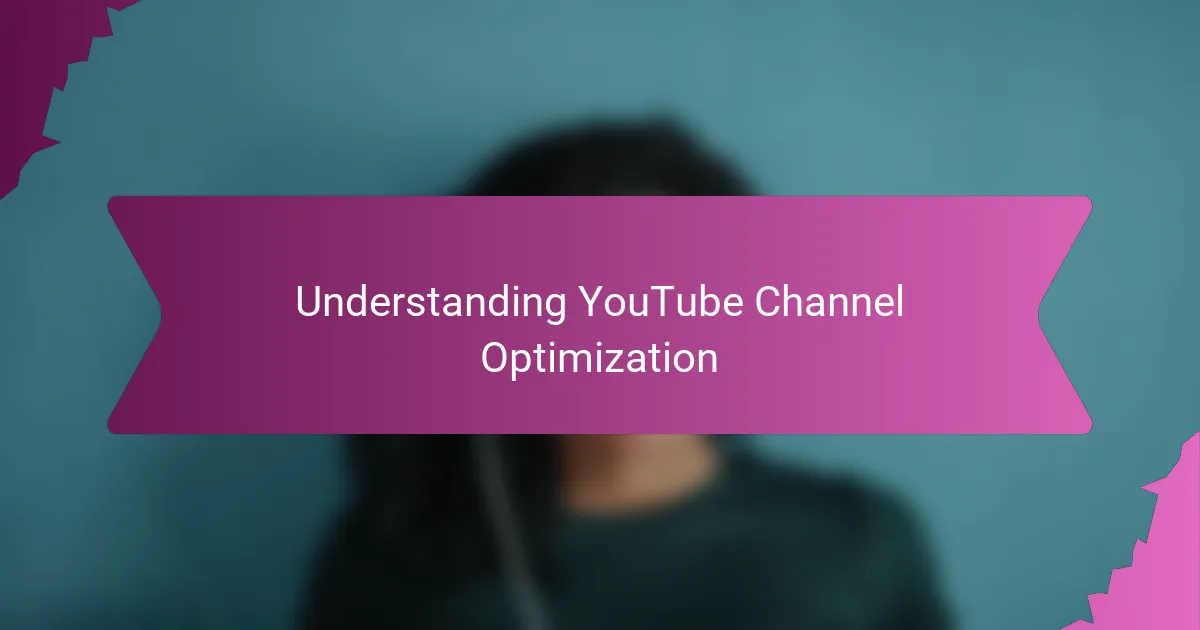
Understanding YouTube Channel Optimization
YouTube channel optimization is more than just tweaking titles or tags; it’s about creating a cohesive experience that invites viewers to stay and explore. I’ve found that understanding this helped me see my channel not as a collection of videos, but as an evolving project that tells a story. Have you ever wondered why some channels just feel right from the first click? That’s the power of thoughtful optimization.
For me, the real challenge was balancing creativity with strategy. It’s tempting to focus solely on content quality, but without optimization, even great videos can get lost in the vast YouTube ocean. I learned that optimization involves everything from eye-catching thumbnails to carefully crafted descriptions—each element working quietly to boost visibility and engagement.
What struck me most was how personal the optimization process felt once I dived in. It wasn’t about gaming the system; it was about sharing my music project in the most accessible and inviting way possible. That human touch, combined with smart tactics, made all the difference in growing my audience organically.
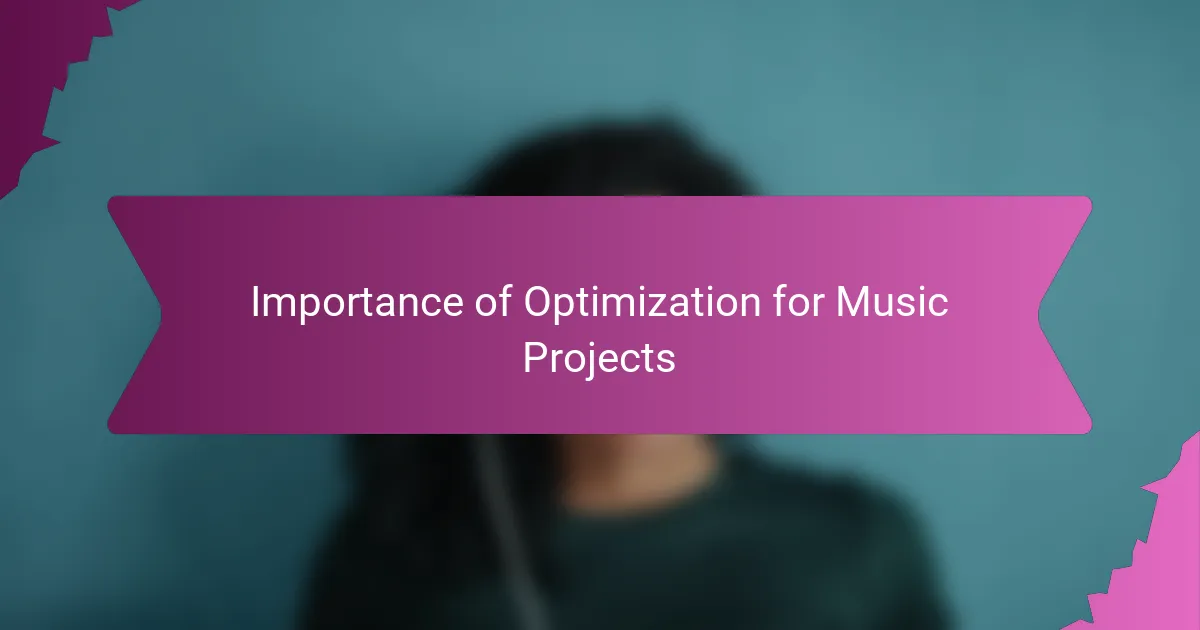
Importance of Optimization for Music Projects
Optimization transformed how I connect with my audience. When I started paying attention to keywords and playlist organization, I noticed more listeners sticking around and exploring my music. It felt like I was finally speaking their language, making my project easier to discover and enjoy.
Have you ever released a track you loved but saw it barely get views? That frustration pushed me to understand that optimization is the bridge between creating music and sharing it with the right people. It’s not just about numbers—it’s about making sure your passion reaches the ears it deserves.
In the fast-paced music world, standing out isn’t optional; it’s essential. Optimization gives your channel a fighting chance to be heard amid the noise. From my experience, those small tweaks—like engaging video titles or targeted tags—can spark meaningful growth that feels rewarding every step of the way.
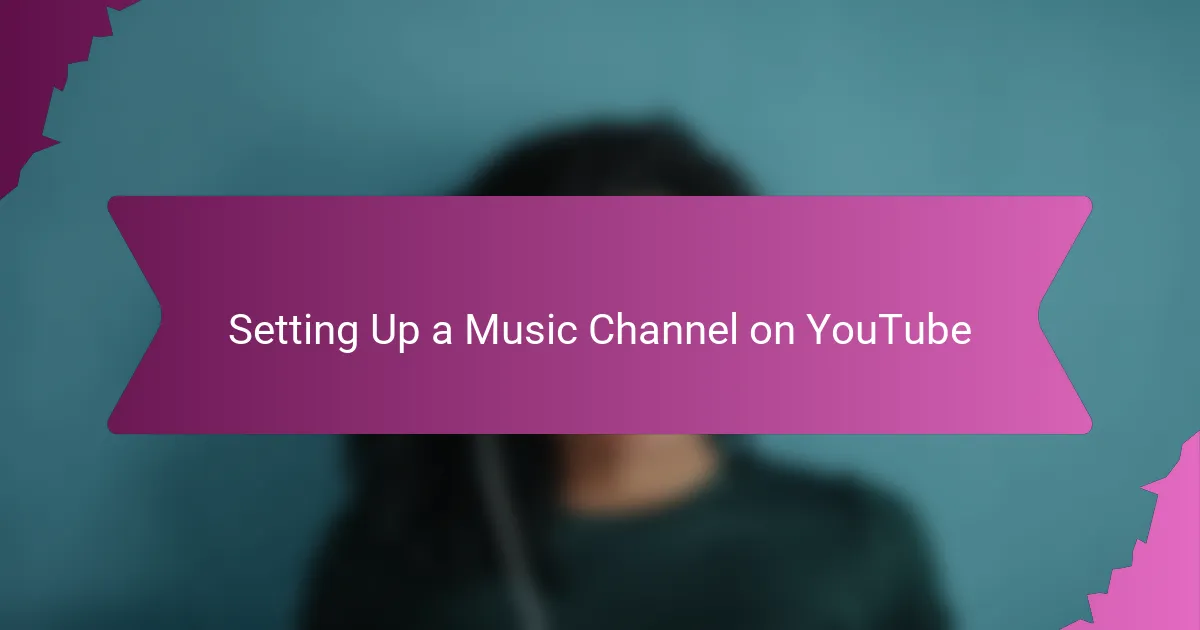
Setting Up a Music Channel on YouTube
Setting up my music channel on YouTube felt like laying the foundation for something much bigger than just uploading videos. I remember spending hours choosing my channel name—something that truly reflected my musical identity and was easy to remember. Have you noticed how a catchy, relevant name can make all the difference in attracting the right audience?
Next came the visuals, which I couldn’t overlook. Crafting a striking channel banner and profile picture wasn’t just about looking professional; it was about conveying the mood and vibe of my music before anyone even hit play. In my experience, these first impressions set the tone and invite viewers to dive deeper into your sound.
I also made sure to fill out every section in the “About” tab thoughtfully, sharing my story and what listeners could expect. This personal touch helped me connect with fans even before they heard a note, creating a welcoming space that felt genuine. Isn’t it amazing how a few words can turn casual visitors into loyal supporters?

Creating Engaging Music Content
Creating content that truly engages listeners took some trial and error for me. I realized that simply posting my music wasn’t enough—I needed to tell a story with each video, whether it was behind-the-scenes clips, lyric breakdowns, or live sessions. Have you ever watched a music video that made you feel like you were part of the creative journey? That’s exactly the vibe I aimed to create.
Another thing I found crucial was varying the formats to keep my audience interested. Sometimes, I’d upload raw acoustic versions, other times polished music videos, and occasionally, collaborations with other artists. This mix kept things fresh and gave my viewers new reasons to keep coming back.
I also learned that interacting with viewers through comments and community posts transformed passive watchers into active fans. Asking questions like “Which version do you prefer?” or “What song should I cover next?” sparked conversations and helped me understand what my audience truly wanted. That connection made all the difference in turning my channel into a lively music project, not just a playlist.

Using SEO for Music Videos
When I started using SEO for my music videos, I quickly realized it’s not just about tossing in popular keywords. I had to dive deep into what my listeners might actually search for—like genre specifics, moods, or even occasions. Have you ever wondered why some videos pop up immediately when you look for a late-night chill playlist? That’s the magic of targeted SEO.
Optimizing titles and descriptions felt like crafting little invitations, each one designed to catch attention and set the right expectations. I remember tweaking a video’s description to include not only the song’s story but also related terms my audience used—I saw the views climb steadily after that. Sometimes, simply adding a few relevant hashtags or placing key phrases early in the description made my music videos easier to find without losing authenticity.
Thumbnails were another lesson in SEO for me. Picking an eye-catching image that also reflected the song’s vibe wasn’t just an aesthetic choice; it was a strategic move to stand out in search results and suggested videos. Have you ever clicked on a music video just because its thumbnail promised something unique? That’s the kind of connection I aimed for every time I uploaded content.
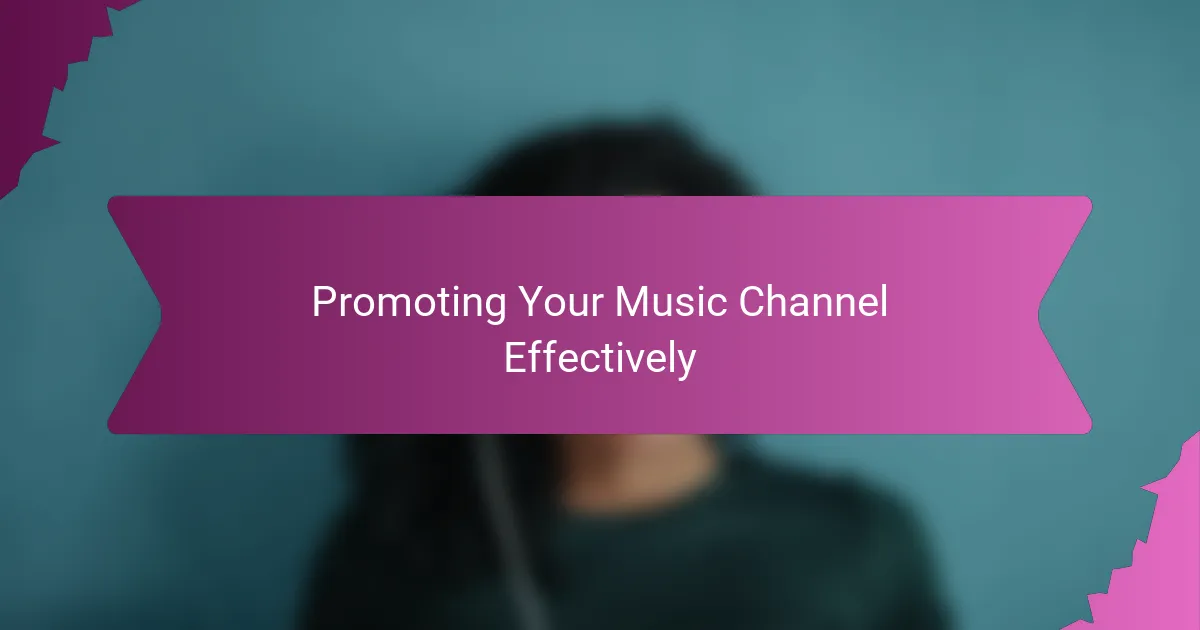
Promoting Your Music Channel Effectively
Promoting your music channel effectively was one of those skills I had to learn on the fly. Early on, I realized that just uploading great tracks wasn’t enough. So, I started sharing my videos across social media, music forums, and even collaborating with other creators—each step felt like planting a seed in different gardens, hoping to see my music take root.
I also found that consistency in promotion matters as much as consistency in content. Scheduling posts and teasing upcoming releases built anticipation among my audience. Have you ever felt the buzz right before a new track drops? That excitement drew more viewers to my channel and kept them coming back for more.
What surprised me most was how engaging directly with my growing community boosted my channel’s visibility. Responding to comments, asking for feedback, and inviting fans to share their favorite songs turned casual listeners into passionate advocates. It’s a reminder that promotion isn’t just about outreach—it’s about building relationships that amplify your music organically.
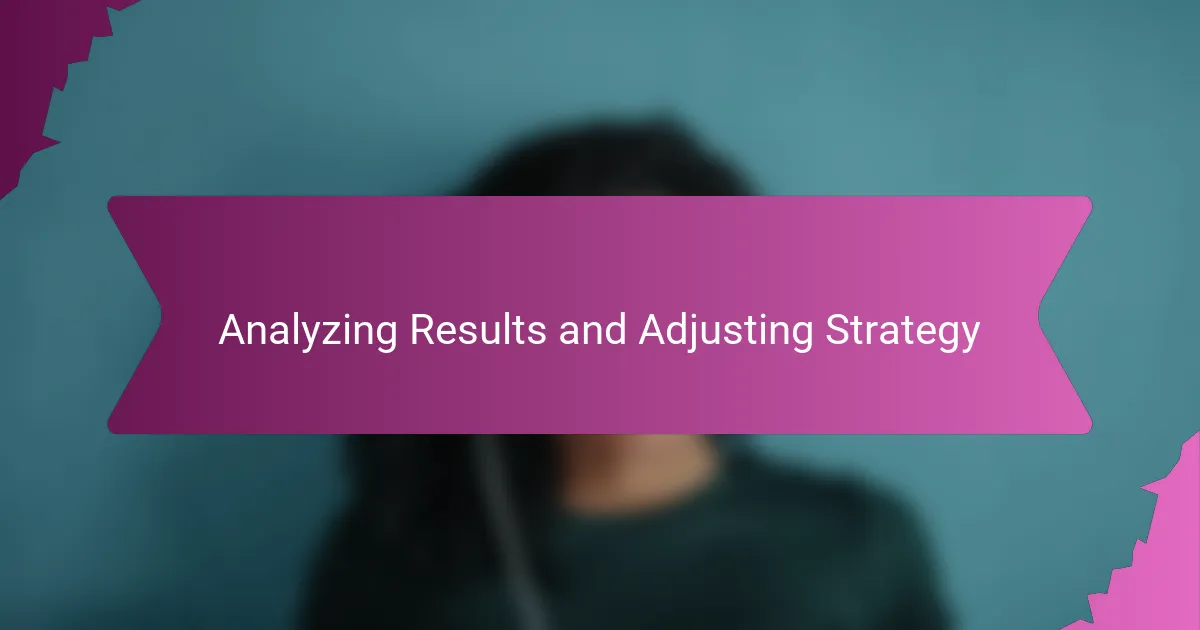
Analyzing Results and Adjusting Strategy
Reviewing my channel analytics became a weekly ritual. I’d look beyond just views and likes, focusing on watch time and audience retention to understand which videos truly resonated. Have you ever noticed how a video with fewer views can still have a bigger impact if people watch it all the way to the end? That insight shifted how I crafted future content.
Adjusting my strategy wasn’t always comfortable. Sometimes, I had to drop ideas I was emotionally attached to because the data said my audience wasn’t responding. It felt like a tough balancing act between staying authentic and being tactical, but that flexibility was key to growth. Did my channel feel more alive when I started listening closely to what my viewers actually wanted? Absolutely.
Another lesson I learned was to keep testing small changes—different thumbnails, titles, or even upload times—and then comparing the results. It’s like fine-tuning an instrument; each tweak improved the harmony between my music and my audience’s preferences. For me, this ongoing process of analyzing and adjusting turned optimization from a task into an exciting creative challenge.